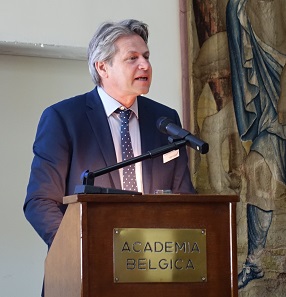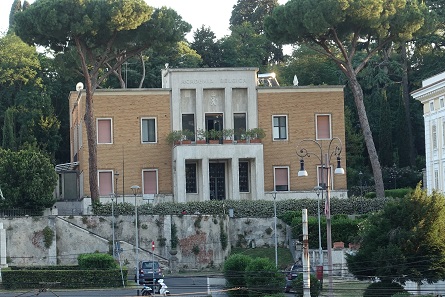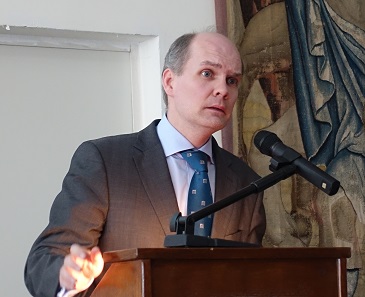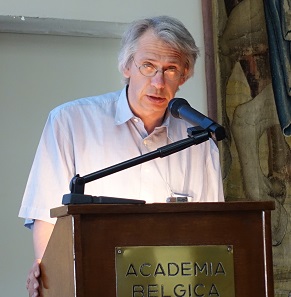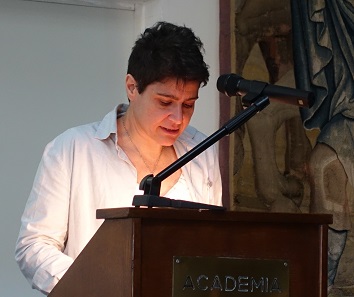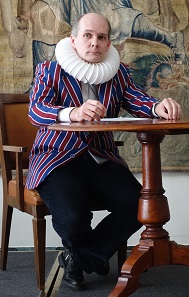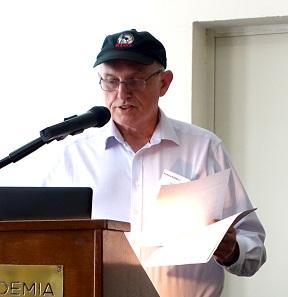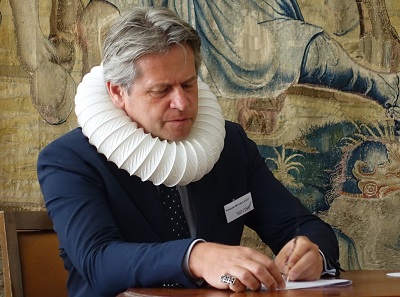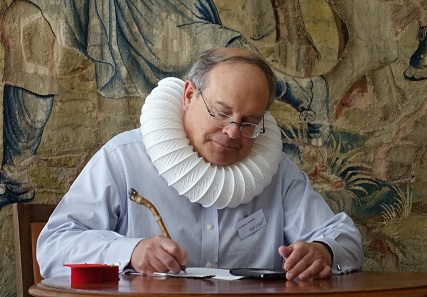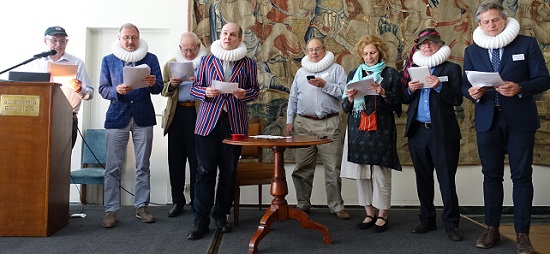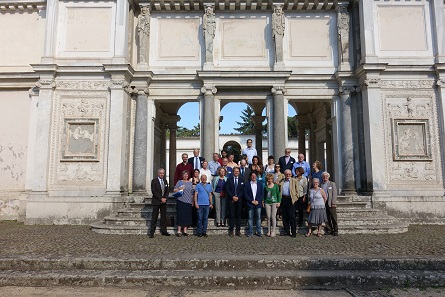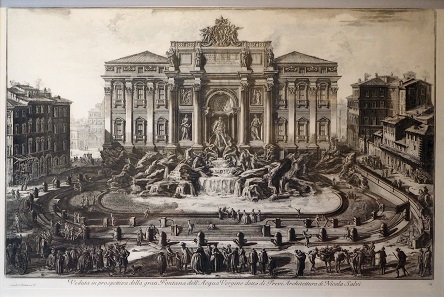by Ursula Kampmann
translated by Annika Backe
June 8, 2017 – Why is it so important to investigate the history of research? Many a non-historian might think that what some people thought and wrote 400 years ago is long since overtaken. Basically true though this is, the history of research is the only tool for us to understand why some approaches have been developed in a certain era while others haven’t.
Francois de Callatay opened the congress ‘Numismatic antiquarianism through correspondence (16th-18th cent.)’. Photo: UK.
The history of research is nothing less than a reflection on the tracks – both right and wrong – of one’s own discipline. For instance, how came that numismatics, a cherished hobby of rulers and great minds in the past, carves out an existence as a so-called auxiliary science nowadays?
The Academia Belgica. It provides free rooms for every academic with a research interest in the Belgian past, looking for source material in Rome. Photo: UK.
That numismatics was at the heart of the antiquarians’ thinking indeed was reflected in the FINA Conference, held at the Academia Belgica in Rome from May 31 to June 1, 2017. FINA is short for ‘Fontes inediti numismaticae antiquae‘, unedited sources on ancient numismatics.
Bernhard Woytek introduced the latest research findings on the letters of Joseph Eckhel. Photo: UK.
Crossing universities, this project repeatedly brings numismatists mainly from Belgium, Germany, France, Italy, Great Britain, Austria, and the U.S. together.
Ute Wartenberg talked about the 17th century recording of English hoards. Photo: UK.
They accessed letters, manuscripts that were never published, and inventories, to write the history of numismatics and of those who occupied themselves with numismatics: the history of the antiquarians, the collectors, and the dealers.
Federica Missere Fontana followed the traces of rare 2nd century coins in the correspondence of various antiquarians. The session was chaired by Martin Mulsow. Photo: UK.
What is an antiquarian in the first place? In his introductory paper, Alain Schnapp asked and answered this question. It’s important to note that an antiquarian and a collector are two different things. With his superior intellect and his all-pervasive curiosity, he isn’t satisfied with merely placing one object next to the other, thus creating a meaningful complex. He uses the coins as a source to reconstruct his version of the past.
By introducing the detailed correspondence on a book that was never to be published, Michiel Verweij cautioned against taking the content of a letter all too literally. Photo: UK.
18 speakers from seven nations talked in three languages about how he achieved this practically, to what extent collectors and dealers were antiquarians themselves – and vice versa –, and in what partnerships and networks all parties interested in coins were acting.
Elena Vaiani has recently published the correspondence between Nicolas de Peiresc and Lelio Pasqualini. She presented results. Photo: UK.
It was a truly international congress that brought the international element of the world of the antiquarians in the 16th and 17th century back to life. It was organized by Francois de Callatay on behalf of the Academia Belgica and the Bibliothèque royale de Belgique. Not only academic funds provided financial support, but also, quite generously, two numismatic auction houses – Numismatica Genevensis und Künker – as well as the ‘Deutscher Verband der Münzhändler’ and the ‘Schweizer Verband der Berufsnumismatiker’. This can only be acknowledged as a reasonable investment in the future, for nothing is more important than to illustrate to politicians and lobbyists with eyes only for archaeology how far reaching the tradition of numismatics actually is.
Bernhard Woytek as Ioannes Vegetius, a dealer in ancient objects. Photo: UK.
The unchallenged highlight of the event was the scenic performance of a body of letters revolving around a coin purchase of Queen Elizabeth I.
Andrew Burnett as narrator. Photo: UK.
Andrew Burnett was the author of the stage play, and distinguished researchers assumed the various roles. An unforgettable experience within the framework of a congress that proved highly fruitful for research!
Francois de Callatay as Sir Nicholas Throckmorton, the then English ambassador in France. Photo: UK.
Jonathan Kagan as William Cecil, private secretary to Elizabeth I Queen of England. Photo: UK.
Maria Christina Molinari as Elizabeth I with her private secretary, aka Jonathan Kagan in real life. Photo: UK.
If we shadows have offended, Think but this, and all is mended – that you have but slumbered here, while these visions did appear. From left to right: Andrew Burnett, Johan van Heesch, Alain Schnapp, Bernhard Woytek, Jonathan Kagan, Maria Christina Molinari, John Cunnally, and Francois de Callatay. Photo: UK.
Research can be lots of fun, as evidenced by the actors in this play.
The attendees of the congress in the Villa Giulia. Photo: UK.
Inviting all attendees to a reception in the wonderful garden of the Embassy, the Belgian Ambassador to the Holy See provided the framework program. The private tour given by Valentino Nizzi, the new Director of the Villa Giulia with all her magnificent Etruscan objects also deserves special mentioning.
Giovanni Battista Piranesi (1720-1778), view of the Trevi Fountain in Rome.
And that Rome is the center of antiquity and always worth a visit is something that the predecessors of today’s numismatists, the 16th century antiquarians already knew.
You can find the conference program in CoinsWeekly.
We reported live from the event on our Facebook account ‘Ursula Kampmann’.
And if you want to learn about the origins of the custom of throwing coins in the Trevi Fountain, you should read our article on German archaeologist and antiquities dealer Wolfgang Helbig (1839-1915).





